
The Sega CD, known as Mega-CD in most regions outside North America and Brazil, is a CD-ROM accessory for the Sega Genesis produced by Sega as part of the fourth generation of video game consoles. It was released on December 12, 1991, in Japan, October 15, 1992, in North America, and April 2, 1993, in Europe. The Sega CD plays CD games and adds hardware functionality such as a faster CPU and graphic enhancements such as sprite scaling and rotation. It can also play audio CDs and CD+G discs.
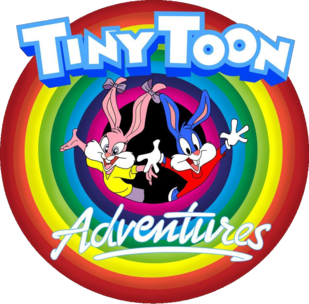
Tiny Toon Adventures is an American animated television series created by Tom Ruegger that was broadcast from September 14, 1990, to December 6, 1992. It was the first animated series produced by Steven Spielberg's Amblin Television in association with Warner Bros. Animation. The show follows the adventures of a group of young cartoon characters who attend Acme Looniversity to become the next generation of characters from the Looney Tunes series.

Treasure Co., Ltd. is a Japanese video game developer based in Tokyo known for its action, platform, and shoot 'em up games. The company was founded in 1992 by former Konami employees seeking to explore original game concepts and free themselves from Konami's reliance on sequels. Their first game, Gunstar Heroes (1993) on the Sega Genesis, was a critical success and established a creative and action-oriented design style that would continue to characterize their output. Treasure's philosophy in game development has always been to make games they enjoy, not necessarily those that have the greatest commercial viability.

Tiny Toon Adventures is a platform video game for the NES. It was developed and published by Konami and released in 1991. It is the first Tiny Toon Adventures video game to be released for a video game console.

Tiny Toon Adventures: Defenders of the Universe is a cancelled fighting game. Based on the Tiny Toon Adventures franchise, it was initially scheduled for release in mid-2002, but was cancelled for unknown reasons, despite having completed development. It was developed by Treasure and it was originally slated for the PlayStation 2. Nintendo Power has listed this game in its publication, suggesting that there was also going to be a GameCube version. On 25 February 2009, a ROM image of the game was released by a member of the Internet forum Lost Levels.
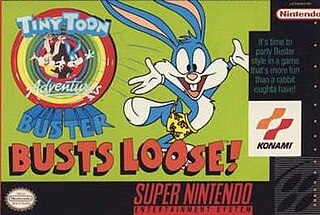
Tiny Toon Adventures: Buster Busts Loose! is a video game for the Super NES console that is based on the animated TV series Tiny Toon Adventures. It was developed and published by Konami, released in 1992 in Japan and in 1993 in Europe and North America.
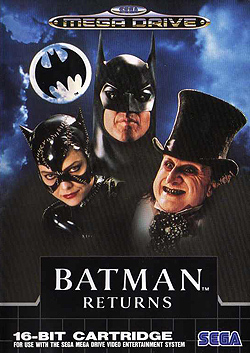
Batman Returns is the name of several video games for various platforms based on the 1992 film of the same name.

Landstalker: The Treasures of King Nole is an action-adventure game that was developed by Climax Entertainment and released for the Sega Genesis in 1992 in Japan and 1993 elsewhere. Players take on the role of the treasure hunter Nigel as he navigates a three-dimensional world through an isometric viewpoint, solving puzzles and fighting enemies.
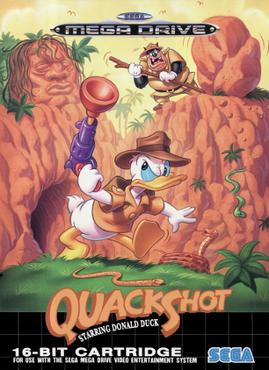
QuackShot Starring Donald Duck, released in Japan as QuackShot Gurujia-ō no Hihō, is a 1991 platforming video game developed and published by Sega for the Sega Genesis. The game was released in Europe in 1991, in North America on December 19, 1991, and in Japan the following day. QuackShot stars Donald Duck and his three nephews, Huey, Dewey, and Louie, as treasure-hunters. The game was influenced by the Indiana Jones film series.

Streets of Rage 2, known as Bare Knuckle II in Japan, is a 1992 side-scrolling beat 'em up video game published by Sega for the Genesis/Mega Drive. A sequel to Streets of Rage (1991), the characters Axel Stone and Blaze Fielding return while the game also introduces two new characters: Max Thunder, and Eddie "Skate" Hunter, the younger brother of Adam Hunter from the first game.

Castle of Illusion Starring Mickey Mouse is a 1990 platform game developed and published by Sega and released for the Mega Drive/Genesis. An 8-bit version of the game was later released for the Master System and Game Gear. The game follows Mickey Mouse on a quest to save Minnie Mouse from the evil witch Mizrabel. It is the first game in Sega's Illusion video game series starring Mickey.
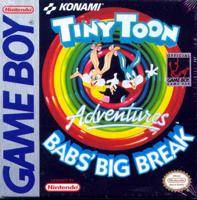
Tiny Toon Adventures: Babs' Big Break is the first Tiny Toon Adventures game released on the Nintendo Game Boy. It was released in 1992 and was developed and published by Konami.
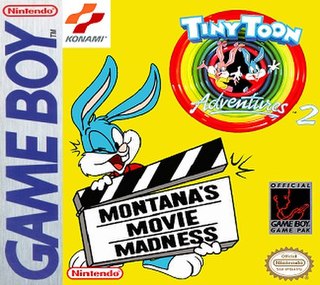
Tiny Toon Adventures: Montana's Movie Madness is the second Tiny Toon Adventures game released on the Nintendo Game Boy. It was released in 1993 and was developed and published by Konami. It was released in Japan as Tiny Toon Adventures 2: Buster Bunny no Kattobi Daibouken.

Tiny Toon Adventures: Wacky Sports Challenge, is a Sports party video game. The game was released in 1994 for the Super Nintendo Entertainment System and developed and published by Konami. The video game is based on the American children’s television series, Tiny Toon Adventures. It is one of the few SNES games to feature an SNES Multitap as a useable controller.
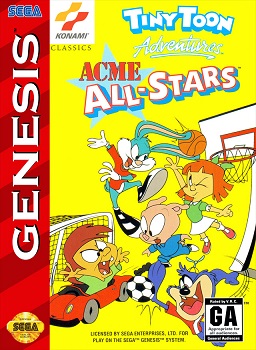
Tiny Toon Adventures: ACME All-Stars is a Tiny Toon Adventures-based sports video game released on the Sega Genesis video game console. The game was developed and published by Konami in 1994.

Tiny Toon Adventures: Wacky Stackers is the first Tiny Toon Adventures video game released on the Nintendo Game Boy Advance. It was released on December 30, 2001 and was developed by Warthog and published by Conspiracy Games. It is also the first puzzle-style game for the franchise. The game features several characters from the television series, including: Buster Bunny, Montana Max, Elmyra Duff, Furrball, Babs Bunny, Plucky Duck, Gogo Dodo and Dizzy Devil.

Tiny Toon Adventures: Buster's Bad Dream is the second Tiny Toon Adventures-related game released on the Nintendo Game Boy Advance. It was released on July 5, 2002 in Europe and was developed by Treasure Co. Ltd and published by Swing! Entertainment Media AG.

McDonald's Treasure Land Adventure is a 1993 platform game developed by Treasure and published by Sega for the Sega Genesis. Based on the McDonald's fast food restaurant chain, specifically its McDonaldland marketing campaign, players control Ronald McDonald in his efforts to retrieve the missing pieces of a map that lead to the location of a buried treasure from a group of villains. Ronald can defeat enemies by using a magic attack and can latch onto hooks with his scarf to reach higher platforms.
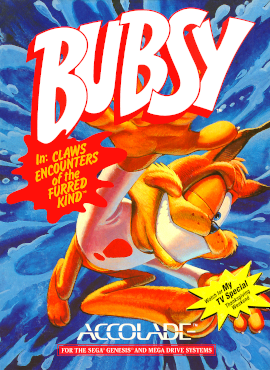
Bubsy in: Claws Encounters of the Furred Kind, often shortened to Bubsy, is a platform game first released for the Sega Genesis and Super Nintendo Entertainment System by Accolade in 1993. It is the first entry in the Bubsy series of video games. The game's title is a play on words in reference to the film Close Encounters of the Third Kind, with the game revolving around Bubsy defending the planet's supply of yarn balls from alien invaders.



















